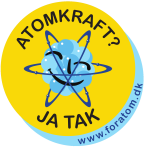Fukushima natural disaster
No operator error was involved in Fukushima-Daiichi, a natural disaster. On March 11, 2011, Japan was hit by the fourth-largest earthquake in world history. The quake measured 9.1 on the Richter scale [1].

Earthquake
The reactors down shut down as designed immediately after the earthquake was detected. The safety control rods enter the reactor core and stop the fission process. Called Scram [2]. After a shutdown, the fuel in the reactor core gives off heat, so-called decay heat. It needs continued cooling for many hours after the fast shutdown until they reach the safe state known as “cold shutdown.”
The earthquake destroyed transformer stations and the large transmission tower. It cuts off the external power supply to the plant and drives the cooling water pumps. The plant switched to backup from emergency diesel generators as designed [3].
The safety systems worked, and although the plant was designed to withstand an 8.0 earthquake, it survived a significantly stronger one [4].
Tsunami
The subsequent 15-meter-high tsunami flooded the basement where the diesel generators were located, putting them out of action. Only the one located in unit 6 survived and supplied backup energy to units 5 and 6, which thus did not run into problems. The remaining units, 1,2,3, and 4 were not so lucky.
The plant switched to emergency batteries designed to run for eight hours, therefore not a long-term solution. The possibility of a new one was impossible due to the destroyed infrastructure from the tsunami.
Loss of cooling and core meltdown
Without active decay heat removal, more heat was added to the reactor than it took out. As a result, the temperature rose, which led to a so-called core meltdown (Loss Of Cooling Accident LOCA) [10]. Over the next three to four days, core meltdowns occurred at reactor units 1, 2, and 3 [5].
Hydrogen explosions

Figure 2 shows Fukushima’s Mark-1 containment building consisting of a secondary (Outer) and a primary (Inner)—figure 2. Point 1 shows the construction above the service deck consisting of so-called pressure panels or ”blow-out panels”. They are called wholly proven. If a hydrogen explosion occurs, it must blow away without damaging the containment building or the reactor core.
Where did the hydrogen come from?
At extremely high temperatures, the zirconium alloys surrounding the fuel rods were oxidized to zirconium oxide (ZrO2). It reacted with the steam from the boiling cooling water to form hydrogen. This is a chemical reaction, not a nuclear reaction.
The hydrogen vaporized in the upper level of the reactor building and mixed with oxygen, causing hydrogen explosions.
A total of three took place. The first was on reactor unit 1 on March 12, unit-3 on March 14, and unit-4 on March 15. Each reactor building lost its ”hat” due to the hydrogen explosions as they were designed to do. On all the units, the reactor vessel containment buildings remained intact.
Take away points
- There was no operator error involved in Fukushima-Daiichi, a natural disaster. The reactors shut down as designed immediately after the earthquake was detected. The work survived a more potent than designed to withstand.
- The earthquake destroyed transformer stations and the large transmission tower. It cut off the electricity to the cooling water pumps. The plant switched to backup from diesel generators.
- The tsunami destroyed the diesel generators. The plant switched to emergency batteries designed to run for eight hours and, therefore, not a long-term solution. The possibility of a new one was impossible due to the destroyed infrastructure from the tsunami.
- Core meltdowns at reactor units 1, 2, and 3. Hydrogen explosions occurred at reactor units 1, 3, and 4. The beam structure above the containment building consisting of panels, better known as blow-out panels, blew off as they were designed to do in such a situation. No damage to the reactor core or containment building. It was a chemical reaction, not a nuclear reaction.
- Fukushima occurred because the older reactor designs required electrical power to provide long-term cooling, while new reactor designs do not. Generation. III and the next Generation. IV technologist has addressed many safety issues where, in an accident, the reactor shuts down and then cools without human intervention or external forces.
Sources:




